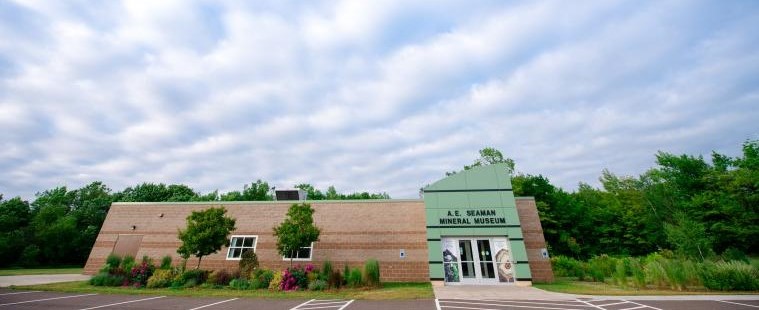Title
The Mesoproterozoic Copperwood sedimentary rock-hosted stratiform copper deposit, Upper Peninsula, Michigan
Document Type
Article
Publication Date
9-1-2013
Abstract
Copperwood is located in Gogebic County, Upper Peninsula, Michigan, within the Porcupine Mountains copper district. It was discovered in 1956 and, in 2008, Orvana Minerals Corp began exploration and development work with production projected in the near future. Stratiform copper mineralization is hosted by gray to black shales and siltstones of the basal Nonesuch Formation. Copper mineralization is overlain by laminated gray siltstones of the Nonesuch Formation and is underlain by red-bed sandstones, conglomerates, and minor siltstones of the Copper Harbor Formation; these rocks are part of a thick section of clastic sedimentary rocks that comprise the upper fill of the Mesoproterozoic (1.1–1.0 Ga) Midcontinent rift. The copper deposit is a tabular body that averages 2.5 m thick, lacks significant basal undulations, and dips 8° to 12° northward on the southwest limb of the Western syncline, an open fold with a shallow plunge to the northwest. Chalcocite is the only Cu-bearing mineral in the orebody and occurs as concentrations along stratigraphic laminations and as disseminated grains. Within the orebody, there is no mineral or metal zoning; Cu, Ag, and S are strongly enriched, Zn is very slightly enriched and Pb and Co lack enrichment. Gangue minerals in the orebody are quartz, clinochore, muscovite/illite, plagioclase, K-feldspar, calcite, and hematite, which are consistent with temperatures of less than 130°C. Only one significant fault, a shallow NW-dipping reverse fault with displacement of up to 7 m, has disturbed the section. The mineralized zone at Copperwood is stratigraphically equivalent to that at the White Pine mine, but Copperwood lacks the structural complexity and the hydrothermal overprint manifested by the native Cu mineralization at White Pine. Reported Canadian National Instrument 43-101-compliant measured, indicated, and inferred resources are 33 million metric tonnes (Mt) of 1.60% Cu and 4.1 ppm Ag for total contained Cu of about 1.165 billion lb and 4.32 Moz of Ag.
The characteristics of Copperwood are consistent with those of reduced-facies, or Kupferschiefer-type, sedimentary rock-hosted stratiform copper deposits. The proposed genetic model is chalcocite replacement of pyrite in unlithified sediments during diagenesis as a result of emanating upward-focused, compaction-driven, Cu-bearing saline basinal waters with Cu leached from the underlying red-bed paleoquifer. The simplicity of the mineralizing event and the undeformed nature of the deposit distinguish Copperwood from most other examples of reduced-facies, or Kupferschiefer-type, sedimentary rock-hosted stratiform copper deposits throughout the world.
Publication Title
Economic Geology
Recommended Citation
Bornhorst, T. J.,
&
Williams, W. C.
(2013).
The Mesoproterozoic Copperwood sedimentary rock-hosted stratiform copper deposit, Upper Peninsula, Michigan.
Economic Geology,
108(6), 1325-1346.
http://doi.org/10.2113/econgeo.108.6.1325
Retrieved from: https://digitalcommons.mtu.edu/museum-p/12


Publisher's Statement
© 2013 Society of Economic Geologists.
Publisher's version of record: https://doi.org/10.2113/econgeo.108.6.1325